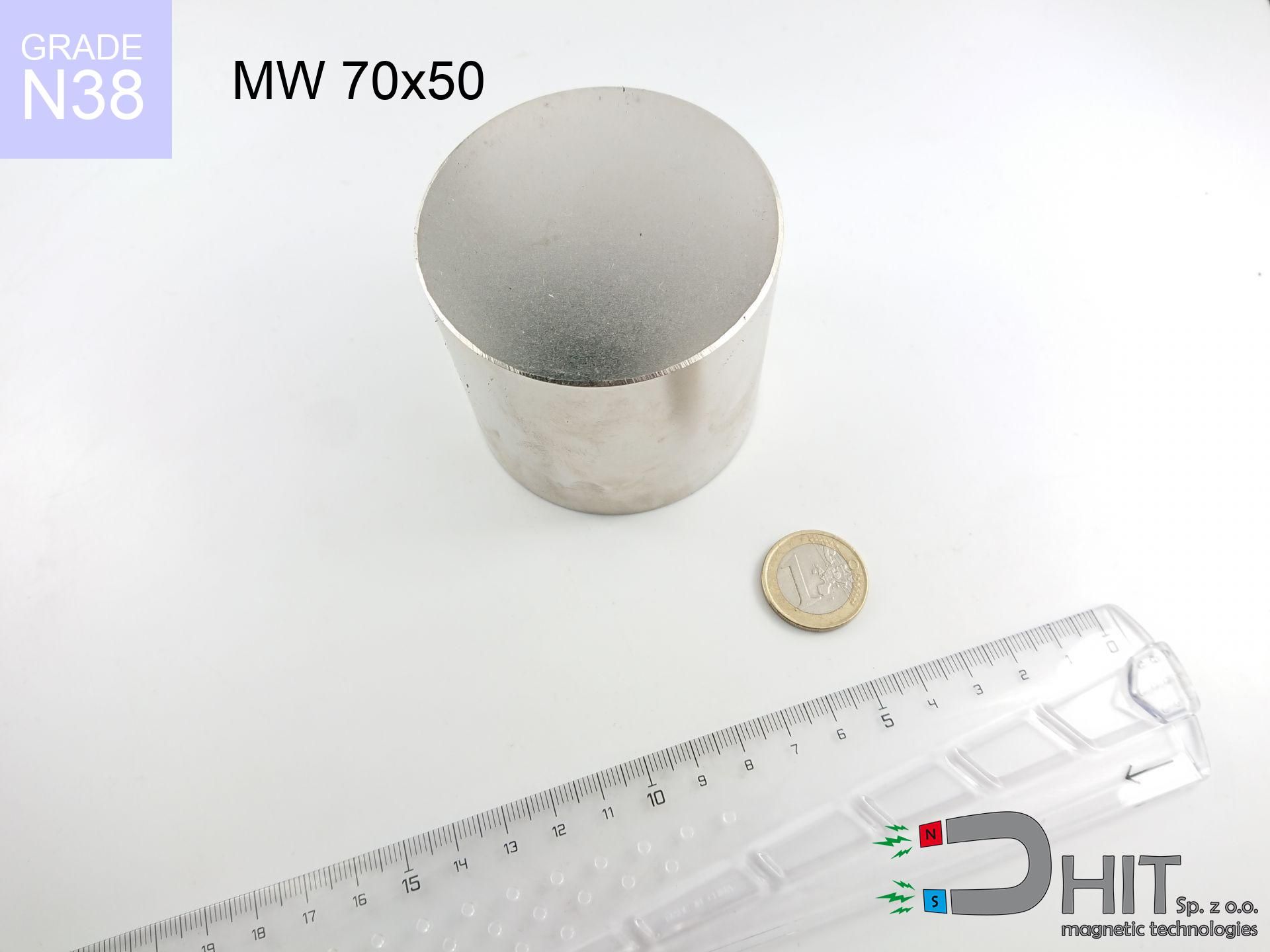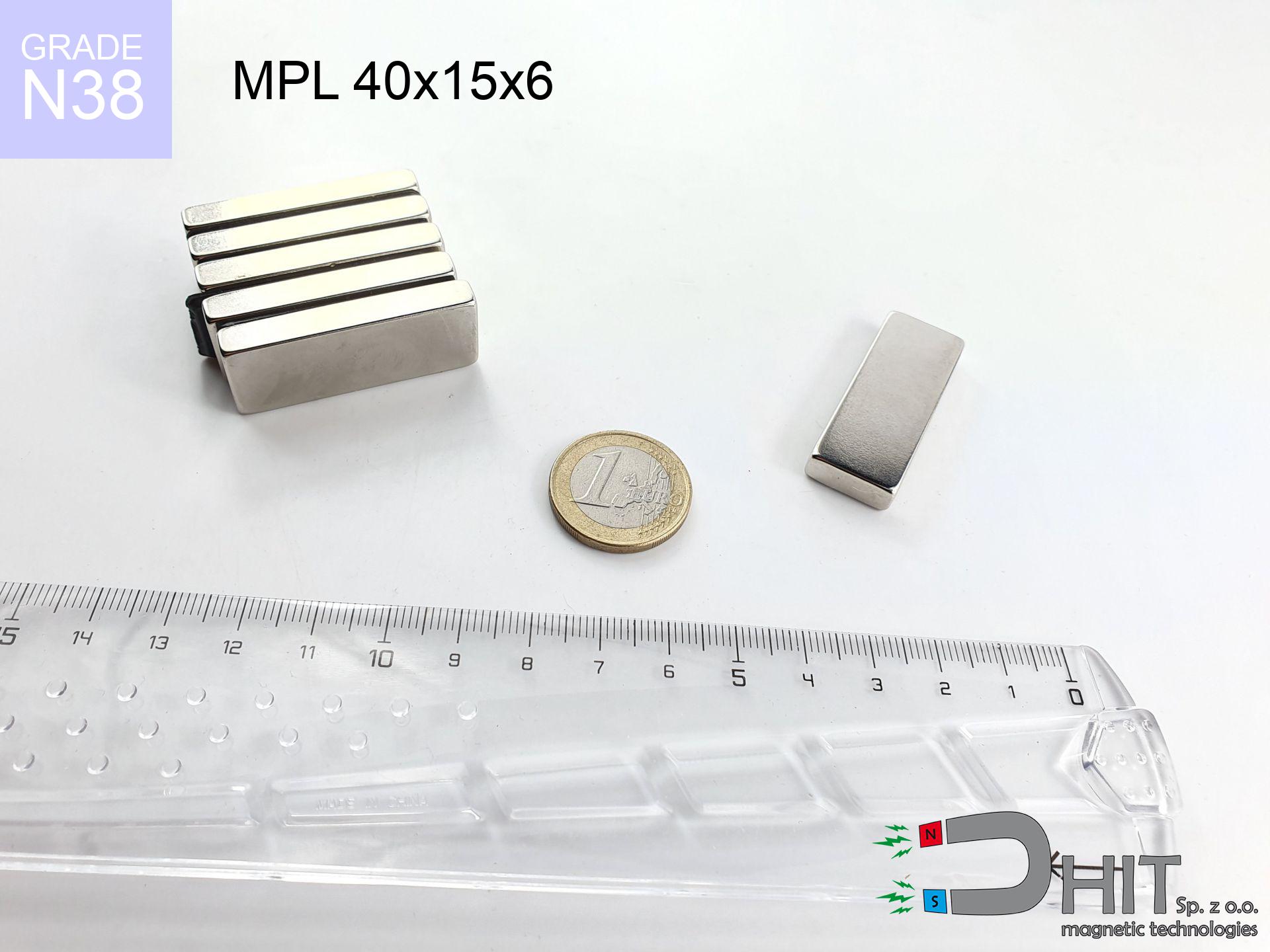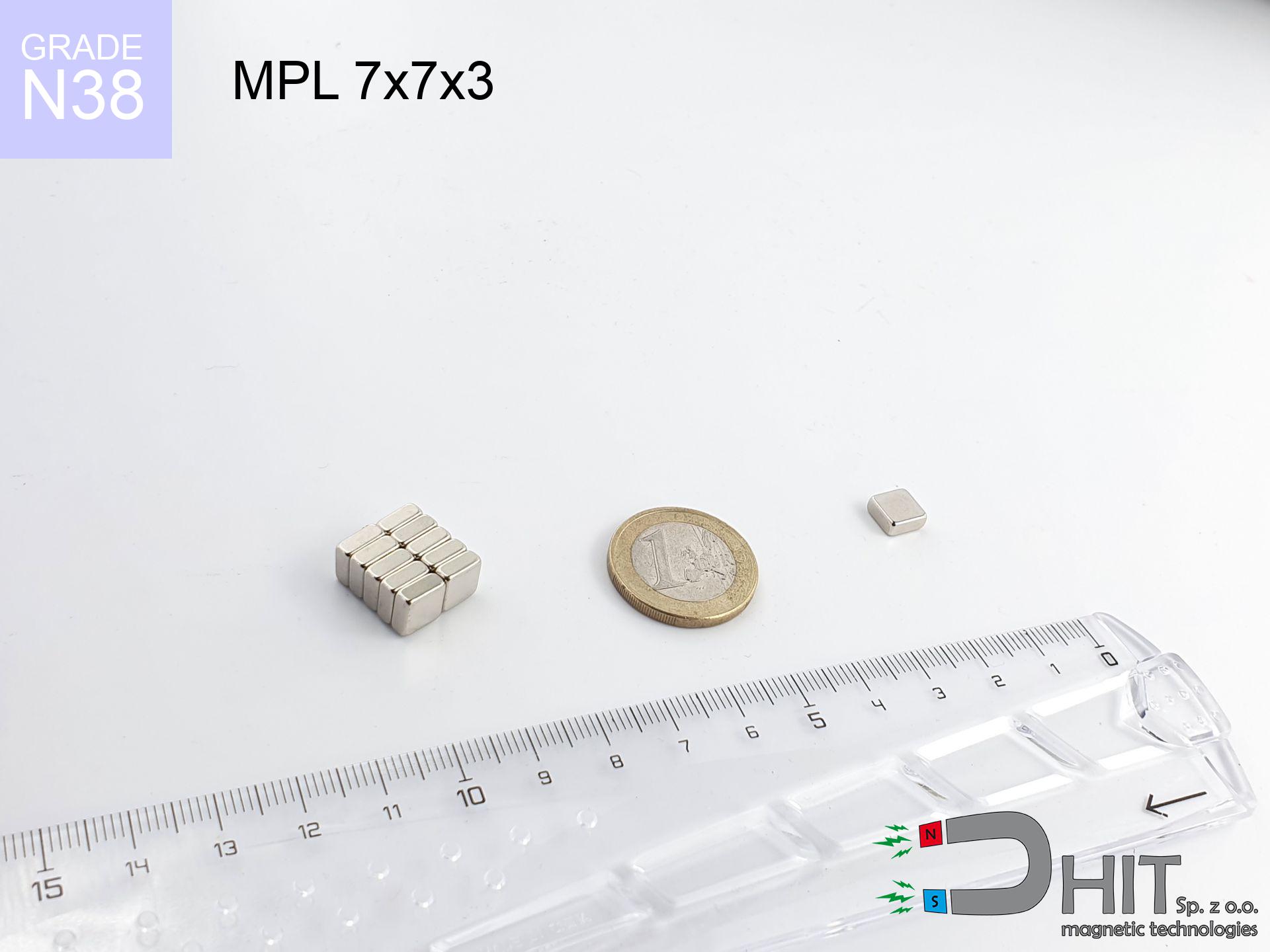MW 70x50 / N38 - cylindrical magnet
cylindrical magnet
Catalog no 010496
GTIN: 5906301811145
Diameter Ø
70 mm [±0,1 mm]
Height
50 mm [±0,1 mm]
Weight
1443.17 g
Magnetization Direction
↑ axial
Load capacity
227.2 kg / 2228.07 N
Magnetic Induction
507.83 mT
Coating
[NiCuNi] nickel
516.60 ZŁ with VAT / pcs + price for transport
420.00 ZŁ net + 23% VAT / pcs
bulk discounts:
Need more?Not sure about your choice?
Contact us by phone
+48 888 99 98 98
or contact us by means of
contact form
the contact page.
Force and structure of a neodymium magnet can be checked using our
online calculation tool.
Orders submitted before 14:00 will be dispatched today!
Magnetic properties of material N38
Physical properties of sintered neodymium magnets Nd2Fe14B at 20°C
Shopping tips
Pros and cons of neodymium magnets.
Besides their high retention, neodymium magnets are valued for these benefits:
- Their magnetic field is maintained, and after around ten years it drops only by ~1% (theoretically),
- They are noted for resistance to demagnetization induced by presence of other magnetic fields,
- Thanks to the glossy finish, the plating of Ni-Cu-Ni, gold-plated, or silver-plated gives an elegant appearance,
- Neodymium magnets ensure maximum magnetic induction on a small surface, which ensures high operational effectiveness,
- Thanks to resistance to high temperature, they are capable of working (depending on the form) even at temperatures up to 230°C and higher...
- In view of the option of free shaping and adaptation to individualized solutions, neodymium magnets can be modeled in a variety of shapes and sizes, which amplifies use scope,
- Significant place in modern technologies – they are utilized in HDD drives, motor assemblies, advanced medical instruments, also modern systems.
- Compactness – despite small sizes they offer powerful magnetic field, making them ideal for precision applications
Problematic aspects of neodymium magnets: weaknesses and usage proposals
- To avoid cracks under impact, we suggest using special steel holders. Such a solution protects the magnet and simultaneously improves its durability.
- Neodymium magnets demagnetize when exposed to high temperatures. After reaching 80°C, many of them experience permanent drop of strength (a factor is the shape and dimensions of the magnet). We offer magnets specially adapted to work at temperatures up to 230°C marked [AH], which are very resistant to heat
- Due to the susceptibility of magnets to corrosion in a humid environment, we recommend using waterproof magnets made of rubber, plastic or other material stable to moisture, when using outdoors
- We recommend cover - magnetic mechanism, due to difficulties in producing threads inside the magnet and complicated forms.
- Health risk related to microscopic parts of magnets pose a threat, when accidentally swallowed, which becomes key in the context of child health protection. Additionally, tiny parts of these products are able to be problematic in diagnostics medical after entering the body.
- Higher cost of purchase is a significant factor to consider compared to ceramic magnets, especially in budget applications
Magnetic strength at its maximum – what it depends on?
The declared magnet strength represents the limit force, recorded under laboratory conditions, namely:
- with the application of a yoke made of low-carbon steel, guaranteeing full magnetic saturation
- whose thickness reaches at least 10 mm
- with a plane perfectly flat
- without the slightest insulating layer between the magnet and steel
- during pulling in a direction perpendicular to the plane
- at room temperature
Determinants of lifting force in real conditions
During everyday use, the actual lifting capacity is determined by many variables, presented from most significant:
- Distance (between the magnet and the plate), since even a microscopic distance (e.g. 0.5 mm) can cause a reduction in lifting capacity by up to 50% (this also applies to paint, rust or debris).
- Force direction – declared lifting capacity refers to pulling vertically. When attempting to slide, the magnet holds significantly lower power (often approx. 20-30% of maximum force).
- Steel thickness – insufficiently thick sheet does not close the flux, causing part of the power to be wasted into the air.
- Plate material – mild steel attracts best. Higher carbon content lower magnetic permeability and lifting capacity.
- Surface quality – the smoother and more polished the surface, the larger the contact zone and higher the lifting capacity. Roughness acts like micro-gaps.
- Temperature – heating the magnet results in weakening of force. Check the thermal limit for a given model.
* Lifting capacity was determined using a steel plate with a smooth surface of suitable thickness (min. 20 mm), under vertically applied force, in contrast under shearing force the load capacity is reduced by as much as fivefold. Moreover, even a slight gap {between} the magnet and the plate decreases the load capacity.
Precautions when working with NdFeB magnets
Warning for heart patients
Individuals with a heart stimulator must maintain an large gap from magnets. The magnetic field can interfere with the operation of the implant.
Metal Allergy
It is widely known that the nickel plating (standard magnet coating) is a potent allergen. If your skin reacts to metals, refrain from direct skin contact and opt for encased magnets.
Keep away from computers
Intense magnetic fields can corrupt files on credit cards, HDDs, and other magnetic media. Stay away of min. 10 cm.
Fire risk
Dust generated during cutting of magnets is flammable. Do not drill into magnets unless you are an expert.
Permanent damage
Keep cool. NdFeB magnets are sensitive to temperature. If you need operation above 80°C, ask us about special high-temperature series (H, SH, UH).
No play value
These products are not intended for children. Swallowing a few magnets can lead to them connecting inside the digestive tract, which poses a severe health hazard and requires immediate surgery.
Immense force
Be careful. Rare earth magnets act from a long distance and connect with huge force, often faster than you can move away.
GPS Danger
Note: neodymium magnets produce a field that interferes with precision electronics. Maintain a separation from your mobile, device, and navigation systems.
Magnets are brittle
Despite metallic appearance, the material is brittle and cannot withstand shocks. Avoid impacts, as the magnet may shatter into hazardous fragments.
Physical harm
Pinching hazard: The attraction force is so great that it can result in hematomas, pinching, and even bone fractures. Use thick gloves.
Important!
Details about hazards in the article: Safety of working with magnets.




![SM 32x150 [2xM8] / N42 - magnetic separator SM 32x150 [2xM8] / N42 - magnetic separator](https://cdn3.dhit.pl/graphics/products/sm-32x150-2xm8-xus.jpg)



